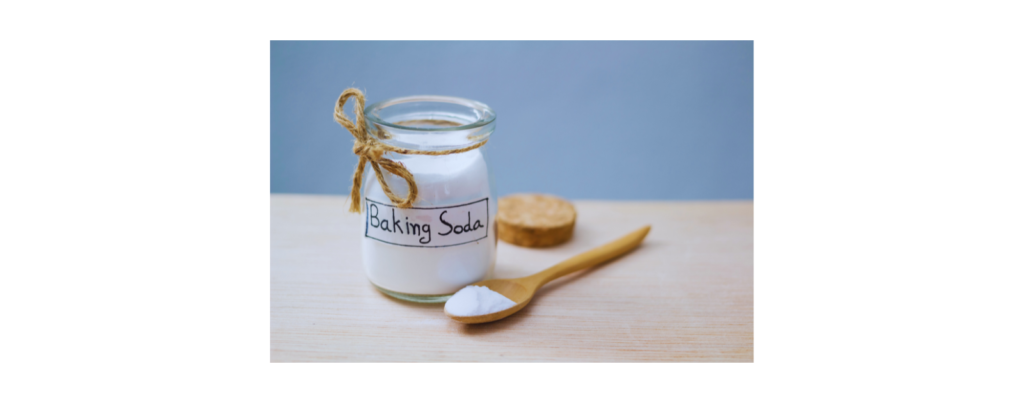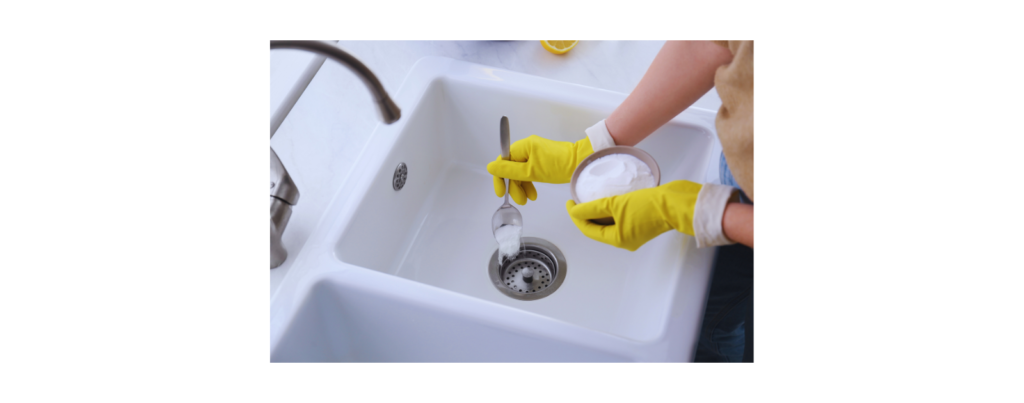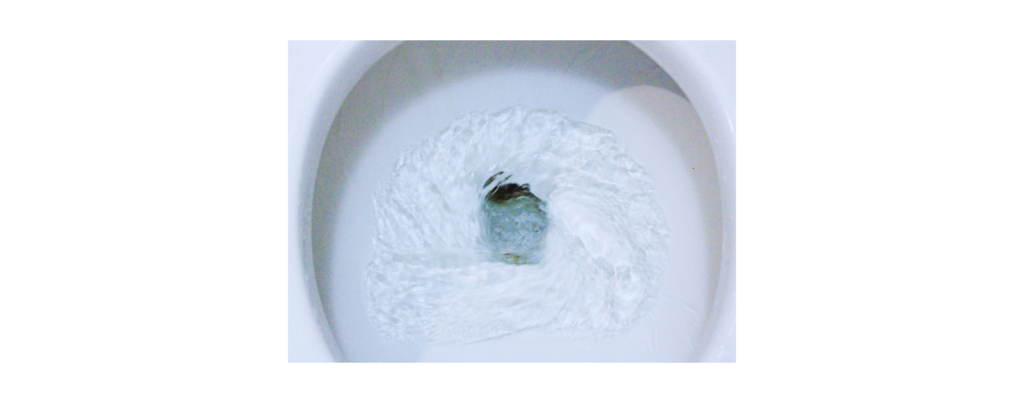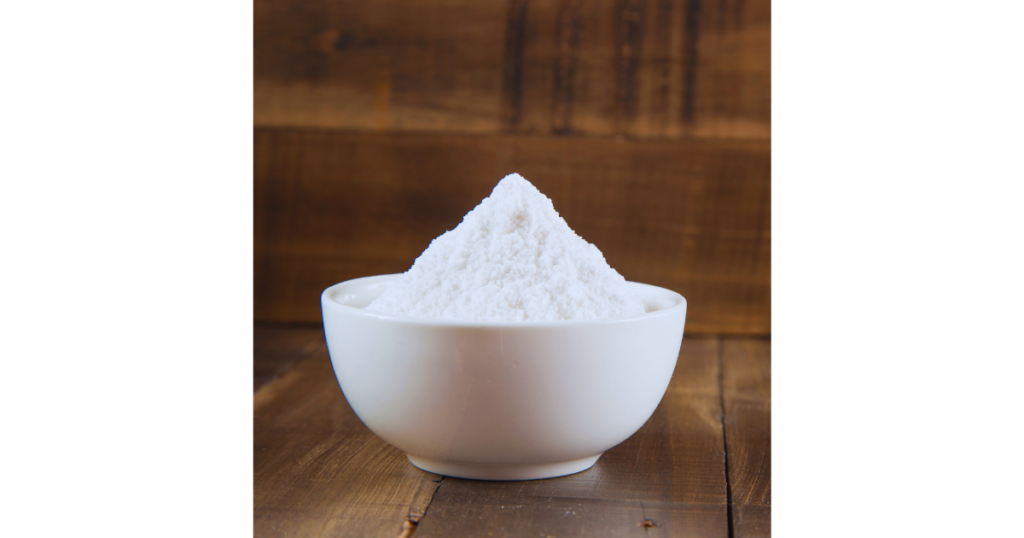If there’s one item in your pantry that deserves a gold star for versatility, it’s baking soda. This humble, natural substance isn’t just for baking—it’s also a powerhouse when it comes to cleaning your home. In this guide, I’ll share my favorite tips and tricks for using baking soda to clean efficiently, safely, and affordably. Ready to transform your cleaning game? Let’s dive in!
Introduction to Baking Soda Cleaning

Sodium bicarbonate, commonly known as baking soda, is a natural and versatile household item that can tackle a wide variety of cleaning tasks. It’s a mild abrasive, meaning it can scrub away tough gunk without scratching surfaces. This makes it perfect for cleaning everything from countertops to sinks without the risk of damaging delicate finishes.
Additionally, baking soda is a natural deodorizer, capable of absorbing and neutralizing even the most stubborn odors. Unlike synthetic air fresheners, it doesn’t just mask smells but actually eliminates them. And the best part? It’s non-toxic and budget-friendly, making it an eco-friendly choice for households looking to minimize their environmental impact.
Kitchen Cleaning with Baking Soda

Cleaning the Oven and Stovetop with Baking Soda Paste
If your oven and stovetop are looking worse for wear after your latest culinary adventures, baking soda is your best friend. Grease and burnt food residues can be tough to remove, but baking soda’s gentle abrasiveness makes it highly effective without the need for harsh chemicals:
- Sprinkle baking soda generously over the greasy and grimy areas. The baking soda will begin to work by breaking down the grease.
- Mix a little water with baking soda to create a baking soda paste and apply it to stubborn spots. The paste adheres to vertical surfaces, allowing it to work its magic more effectively.
- Let the paste sit for about 30 minutes. This gives it time to loosen up the grime.
- Wipe clean with a damp sponge, and voila! A sparkling clean surface without harsh chemicals. For tough spots, you may need to repeat the process or use a soft scrub brush.
Cleaning Dishware and Utensils
For those stubborn stains on your favorite dishware or utensils, baking soda comes to the rescue. It works well on coffee mugs with tea stains, tarnished cutlery, and even pots with burnt-on food:
- Mix baking soda with warm water to create a paste. The paste consistency ensures it clings to surfaces for better cleaning power.
- Apply the paste to the stained items and let it sit for 15-30 minutes. This allows the baking soda to penetrate and lift stains.
- Scrub gently with a non-abrasive sponge, rinse with hot water, and dry thoroughly. For heavily tarnished items, a little extra elbow grease may be required.
Additionally, baking soda is an excellent choice for cleaning a stainless steel sink. Its mild abrasive properties allow for thorough cleaning without scratching the surface.
Bathroom Cleaning with Baking Soda

Freshening Sinks and Bathtubs
Say goodbye to soap scum and grime with this simple method. Bathrooms are notorious for accumulating grime, but baking soda’s gentle scrubbing power can tackle even the toughest buildup:
- Sprinkle baking soda on a damp sponge and scrub away. The abrasive action of baking soda cuts through soap scum without scratching.
- Rinse thoroughly with warm water and dry the surface to prevent water spots and streaks.
- For extra shine and a refreshing scent, mix baking soda with lemon juice to create a natural cleaner. The acidity of lemon juice helps dissolve mineral deposits, leaving surfaces gleaming.
- Finally, rinse with boiling water for deeper cleaning effectiveness.
Cleaning the Toilet Bowl with Vinegar and Baking Soda

For a sparkling clean toilet that’s free from harsh chemicals:
- Pour 1 cup of baking soda into the toilet bowl. Baking soda works to neutralize odors and loosen stains.
- Add 1 cup of white vinegar and let the fizzy magic happen. The reaction between vinegar and baking soda helps break down grime and sanitize the surface.
- Let it sit for 30 minutes, then scrub with a toilet brush and flush. For particularly stubborn stains, you can repeat the process.
Laundry and Fabric Care with Baking Soda
Boosting Laundry Detergent
Need a laundry refresh? Baking soda is a game-changer for your laundry routine. Its natural properties help soften water, making your detergent more effective:
- Add ½ cup of baking soda to your laundry cycle. This works especially well for hard water areas where minerals can reduce detergent efficiency.
- It enhances your detergent’s cleaning power, removes odors, and brightens whites. Baking soda can also neutralize acidic stains and leave your clothes smelling fresher for longer.
Natural Cleaning Combinations
Mix Baking Soda with Lemon Juice for Tough Stains
For those particularly stubborn stains that just won’t budge, mixing baking soda with lemon juice can be a game-changer. The natural acidity of lemon juice combines with the alkalinity of baking soda to create a powerful cleaning paste that can tackle even the toughest grime. Here’s how to use this dynamic duo:
- Create the Paste: Mix equal parts baking soda and lemon juice in a small bowl. The mixture will fizz slightly as the two ingredients react, forming a thick paste.
- Apply to Stains: Spread the paste over the stained area, ensuring it covers the entire surface. The paste’s consistency helps it cling to vertical surfaces, making it ideal for stubborn spots.
- Let it Sit: Allow the paste to sit for 15-30 minutes. This gives the lemon juice time to break down the stain while the baking soda works its magic.
- Scrub and Rinse: Use a damp sponge to scrub the area gently. The abrasive nature of baking soda will help lift the stain without scratching the surface. Rinse thoroughly with warm water to remove any residue.
This method is particularly effective for kitchen and bathroom stains, leaving surfaces clean and fresh with a pleasant lemon scent.
Removing Odors from Carpet and Upholstery
If your carpet or couch could use a little TLC, baking soda is a safe and effective solution:
- Sprinkle baking soda liberally over the surface. This allows the baking soda to absorb deep-seated odors. For routine maintenance, you can also sprinkle a little baking soda while running hot water to keep sink drains fresh.
- Let it sit for 15-30 minutes to absorb odors. For heavily used areas, let it sit longer for better results.
- Vacuum thoroughly, and repeat as needed. This not only removes odors but also freshens up the fabric.
Miscellaneous Cleaning Tasks
Baking soda’s versatility extends far beyond the kitchen and bathroom. Here are some additional ways you can use this household staple to keep your home sparkling clean:
- Trash Cans: Sprinkle baking soda at the bottom of your trash cans to neutralize odors. For a deeper clean, mix baking soda with warm water to create a paste, scrub the interior, and rinse with hot water.
- Carpets and Upholstery: To freshen up carpets and upholstery, sprinkle baking soda liberally over the surface. Let it sit for 15-30 minutes to absorb odors, then vacuum thoroughly.
- Silverware: Restore the shine to your silverware by making a paste with baking soda and water. Apply the paste to tarnished items, let it sit for a few minutes, then buff with a soft cloth and rinse with warm water.
- Refrigerators and Freezers: Place an open box of baking soda in your refrigerator or freezer to absorb and neutralize odors. Replace the box every three months for optimal freshness.
These simple yet effective uses of baking soda can help you maintain a clean and odor-free home with minimal effort.
Safety Precautions and Things to Avoid
While baking soda is amazing, there are a few things to keep in mind to avoid mishaps:
- Avoid using it on: Glass surfaces, certain flat stove tops, finished wood furniture or floors, aluminum cookware, natural stone surfaces, gold-plated items, electronic devices, or precious gemstones. Baking soda’s abrasiveness can damage these delicate surfaces.
- Don’t mix it with: Hydrogen peroxide, ammonia, chlorine bleach, or chemical cleaners. These combinations can create harmful reactions or release toxic fumes.
Things to Never Clean With Baking Soda

While baking soda is a fantastic cleaning agent, there are certain surfaces and materials you should avoid using it on to prevent damage:
- Glass Surfaces: Avoid using baking soda on mirrors or windows, as its abrasive nature can leave scratches and streaks.
- Stone Surfaces: Baking soda can damage the finish on natural stone surfaces like marble and granite. Stick to cleaners specifically designed for these materials.
- Aluminum Cookware: Baking soda can cause discoloration and pitting on aluminum surfaces. Use a gentler cleaner to maintain the integrity of your cookware.
- Gold-Plated Items: The abrasiveness of baking soda can wear away the thin gold layer on plated items, leading to permanent damage.
- Electronic Devices: Never use baking soda to clean electronic devices, as it can get into crevices and cause malfunctions.
Additionally, avoid mixing baking soda with bleach, ammonia, or other chemical cleaners, as this can create harmful reactions or release toxic fumes. Stick to using baking soda with natural ingredients like vinegar or lemon juice for safe and effective cleaning.
By keeping these precautions in mind, you can enjoy the many benefits of baking soda without risking damage to your home or belongings.
FAQ
Q: Can I use baking soda for all types of cleaning? A: Baking soda is versatile but has limitations. Avoid using it on delicate or reactive surfaces like glass or aluminum, as it can scratch or react with the material.
Q: How often should I clean with baking soda? A: You can use baking soda for regular cleaning tasks as needed. It’s gentle enough for frequent use and doesn’t leave harmful residues.
Q: Is baking soda safe for pets? A: Yes, baking soda is non-toxic, but always ensure surfaces are thoroughly rinsed to prevent ingestion by pets. Some animals may experience mild stomach upset if they consume large amounts.
Q: Can I store baking soda in the bathroom for cleaning? A: Absolutely! Just keep it in an airtight container to prevent moisture absorption, as baking soda can clump when exposed to humidity.
Armed with these tips, you’re ready to make baking soda your go-to cleaning superhero. Happy cleaning!





